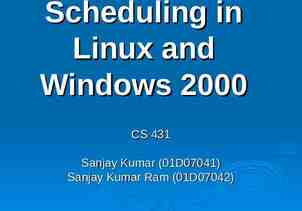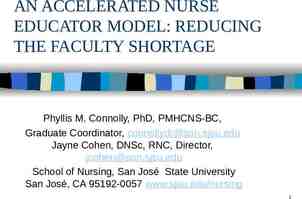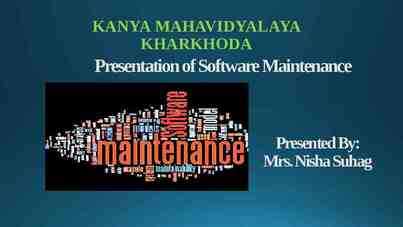Where’s My Action Plan? Susan Brawley Heart of Missouri-RPDC
37 Slides3.86 MB
Where’s My Action Plan? Susan Brawley Heart of Missouri-RPDC Mary Richter Missouri SW-PBS State Coordinator
Where’s My Action Plan? In last year’s Summer Institute folder? In a stack on the desk? In the SWPBS team notebook? Unknown? In your hand ?
Purpose Examine the process of action planning. Investigate how systems, data and practices are incorporated into the action plan. Identify guidelines for developing an action plan. Reflect on 07-08 SWPBS Implementation and where to focus for 08-09.
Action Planning Process of action planning puts the strategic plan (School Improvement Plan) into place. – Goal, Steps, Resources, Outcome Without action planning, the strategic plan remains simply “castles in the air”.
SWPBS Action Plan A roadmap to where you (school/team) are going.
"Would you tell me, please, which way I ought to go from here?" "That depends a good deal on where you want to get to," said the Cat. "I don't much care where--" said Alice. "Then it doesn't matter which way you go," said the Cat. "--so long as I get SOMEWHERE," Alice added as an explanation. "Oh, you're sure to do that," said the Cat, "if you only walk long enough." --From Alice in Wonderland by Lewis Carroll
SWPBS “BIG IDEAS” 1. Systems (How things are done) Team based problem solving Data-based decision making Long term sustainability 2. Data (How decisions are made) On going data collection & use ODR’s (# per day per month, location, behavior, student) Suspension/expulsion, attendance, tardies 3. Practices (How staff interact with students) Direct teaching of behavioral expectations On-going reinforcement of expected behaviors 7 Newcomer 2007
8 Newcomer 2007
Where do you start? Systems, Practices or Data?
Data, data, data “It is a capital mistake to theorize before one has data. Insensibly one begins to twist facts to suit theories, instead of theories to suit facts.” Sir Arthur Conan Doyle (1859-1930) 10 Newcomer 2007
OUTCOMES at rm fo In n io Supporting Staff Performance Social Competence, Academic Achievement, and Safety SY ST EM S School-Wide Behavior and Reading Support PRACTICES Supporting Student Performance Supporting Decision Making
Guidelines for Developing SWPBS Action Plan 1. Develop the plan as a team 2. Start by defining the expected outcomes and summarizing last year’s progress 3. Summarize current status, strengths and areas of improvement 4. Develop goals and activities for two main areas: a) management and b) design and implementation www.pbssurveys.org
Guidelines for Developing SWPBS Action Plan 5. Use the PBS Annual Planning Guide and the Missouri SWPBS action plan template as tools to define and document long (1-2 year) and short (3, 6, & 9 month) term objectives. a) Specify implementation activities that are discrete and achievable. b) Set long term objectives and timelines for activities that require more time and resources and are more challenging to achieve. c) Set short term objectives and timelines for initial activities that have a high likelihood of being successfully achieved in a short period of time. www.pbssurveys.org
Guidelines for Developing SWPBS Action Plan 6. Determine necessary data for measuring the expected outcomes. Data sources for action planning can include results from: Self-Assessment Survey Office discipline referral patterns School Safety Survey Team Implementation Checklist Schoolwide Evaluation Tool Attendance and tardy records Academic progress records Previous documentation of efforts Other critical information specific to the school www.pbssurveys.org
Guidelines for Developing SWPBS Action Plan 7. Be specific about who will be responsible for each activity. 8. Specify when follow-up meetings/activities will occur to assess the status or progress. www.pbssurveys.org
OUTCOMES at rm fo In n io Supporting Staff Performance Social Competence, Academic Achievement, and Safety SY ST EM S School-Wide Behavior and Reading Support PRACTICES Supporting Student Performance Supporting Decision Making
Review of Annual Planning Guide 1. Determine/Review School Improvement Goal 2. Complete Self-Assessment Survey 3. Conduct other assessments as needed 4. Define Team to manage School Improvement Goal 5. Use assessment information to revise School Improvement Goal as needed 6. Develop Annual Action Plan including maintaining/ strengthening/ developing and implementation of programs
Action Plan Items to Consider Path One: Universal Interventions (Coordinated by School-wide PBS Team) 7. Define school-wide rules 8. Develop expectation matrix for non/ classroom settings 9. Define routines for non/ classroom settings 10. Develop teaching schedule (implementation plan) for non/ classroom settings 11. Define consequence (acknowledgement/ corrective) system 12. Teach expectations and routines in non/ classroom settings
Action Plan Items to Consider Path Two: Classroom Interventions (Coordinated by School-wide PBS Team) 7. Define classroom behavioral expectations 8. Define classroom routines. 9. Teach classroom routines and behavioral expectations 10. Establish a 4:1 positive to negative feedback pattern. 11. Establish a physical layout that fits classroom activities. 12. Ensure maximal level of academic engagement. 13. Monitor and promote high level of academic success (e.g., 70%) 14. Establish consistent responses to problem behavior. 15. Deliver instruction in varying modes. 16. Establish efficient system for requesting support for individual students.
Action Plan Items to Consider Create Separate Systems for Students with Chronic Patterns of Problem Behavior Targeted Interventions – Social Skills – Behavior Education Planning Intensive, individual interventions – Function-based support
Action Plan Items to Consider Path Three: Targeted Interventions (Coordinated by Individual Student Support Team) 7. Define system/ rules for student selection 8. Conduct assessment for targeted interventions that are already available 9. Embed function-based concepts to revise targeted interventions 10. Conduct brief functional behavior assessment with student and others in support circle 11. Revise, strengthen, and implement Targeted Interventions 12. Conduct monthly updates on targeted intervention implementation & student progress
Action Plan Items to Consider Path Four: Individual Intensive Interventions (Coordinated by Individual Student Support Team) 7. Define request for assistance system 8. Define system of student selection. 9. For each individual student: a) Conduct full FBA b) Develop system for observing, interviewing, & developing a function-based support plan. 10. Specify individual Action Team members 11. For each school, provide staff development for function based support planning skills 12. Monthly individual student progress updates
Routine Procedures for Each Path 13.Develop & use decision-making model & process 14.Schedule staff development activities 15.Develop & manage budget 16.Schedule and conduct regular reporting cycle to staff & families
The “Big Idea” of School-Wide Systems Goal is to establish host environments that support adoption, sustained use, & expansion of evidence-based practices (Zins & Ponti, 1990)
Keep the Action Plan Off the Shelf! “The question is whether the strategic plan [action plan] will be pursued or end up on a shelf collecting dust, beside other well-intentioned initiatives.” – “Strategic Plan Attacks School Inadequacies”, Hartford Courant, July 13, 1994
Changing the Action Plan The action plan is a guide, a living document. It is okay to change the plan. Make sure the team understands: – What is causing changes to be made – Why the changes should be made – The changes to make (goals, steps, resources). Team must be in agreement. Update the action plan to reflect the changes. – Put revision date Keep a copy of old action plan for records.
Staff Communication How do you communicate with the staff? How do you listen to their input? How does the Action Plan reflect their input?
Monitoring and Evaluating the Action Plan Just as important as identifying the goals and action steps. Ensures that the school/team is following the established direction. How often? – At least quarterly – If rapid change occurring inside/outside school then may want to monitor/evaluate monthly.
Monitoring and Evaluating Plan Implementation: Key Questions Are goals and steps being achieved? – If yes, then acknowledge, celebrate and communicate progress. – If no, consider these questions: Will the goals be achieved according to the timelines specified? If not, why? Should deadlines for completion be changed? Do personnel have adequate resources (money, equipment, training, etc.) to achieve the goals? Are the goals and steps still realistic?
Monitoring and Evaluating Plan Implementation: Additional Tools Missouri SWPBS Action Plan Example Missouri SWPBS Action Plan Checklist
Results of Monitoring and Evaluation of Action Plan What can be learned from monitoring and evaluation to: – improve future planning activities? – improve future monitoring and evaluation efforts?
Celebration When a goal or step is completed, acknowledge that success. Can get too eager to focus on moving to the next step without pausing. Taking time to acknowledge a job well done provides closure, fulfillment and prevents the next planning cycle from being a grind.
Ask . . . Where do we go from here? How will we get there?
Three-Minute Team Update Name, Enrollment, Location Office Discipline Referral Patterns: SWIS graph (OR per day per month) or any other student data you are using for decision making. Status for Teaching and Rewarding School-wide Expectations Roadblocks (if any) Current Team Assessment: Implementation of school-wide PBS: Low 1 High 2 3 4 5 Impact of school-wide PBS on student behavior Low 1 High 2 3 4 5 Initiative Focus for 08-09 (which of the four paths?)










































